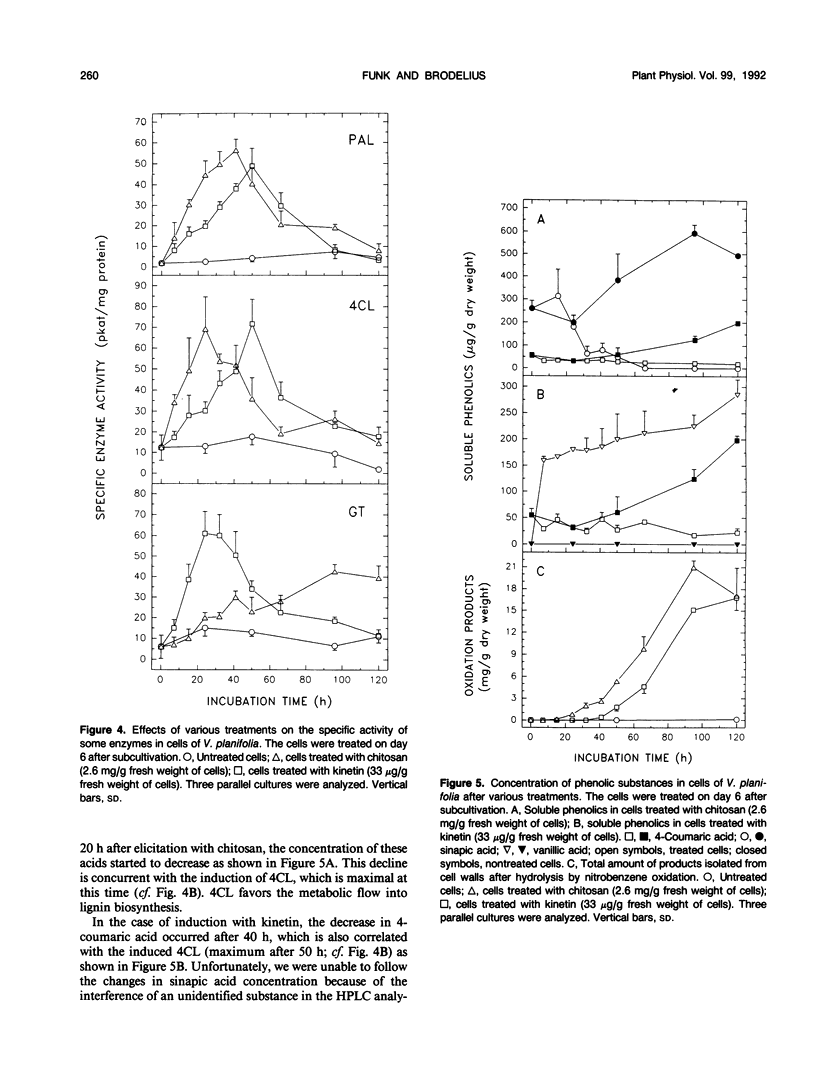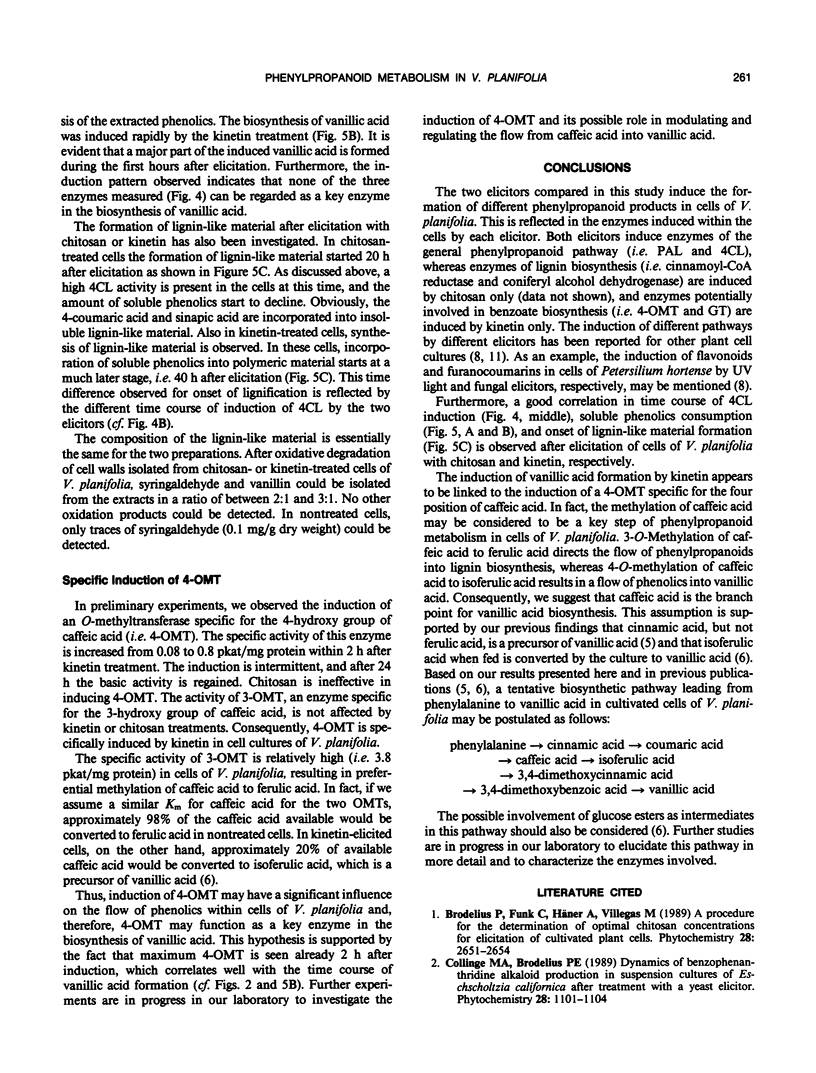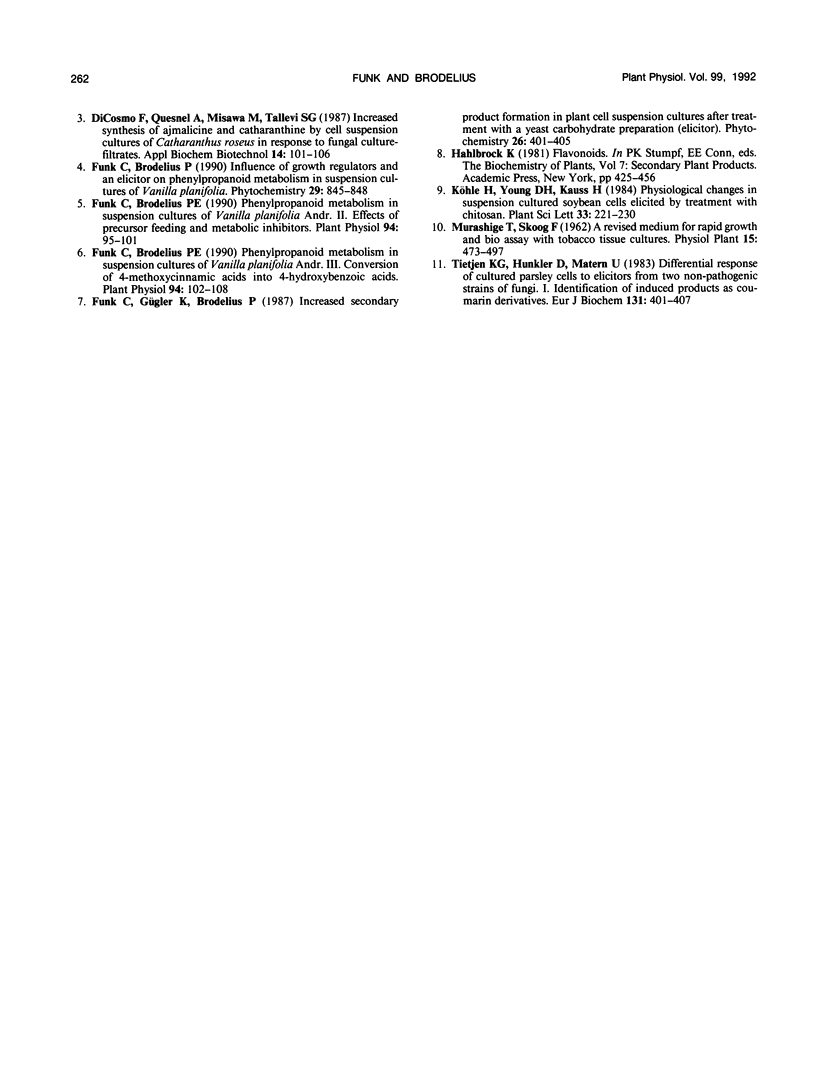Abstract
Kinetin is used as an elicitor to induce vanillic acid formation in cell suspension cultures of Vanilla planifolia. Maximal induction is observed at a kinetin concentration of 20 micrograms per gram of fresh weight of cells. Vanillic acid synthesis is observed a few hours after elicitation. The effects of kinetin on the activity of some enzymes of the phenylpropanoid pathway, i.e. phenylalanine ammonia-lyase, 4-hydroxycinnamate:coenzyme A ligase and uridine 5′-diphosphate-glucose:trans-cinnamic acid glucosyltransferase, are reported and compared to the effects of chitosan. The former two enzymes are induced by chitosan with a maximum activity of approximately 25 to 40 hours after elicitation. All three enzymes are induced by kinetin with maximum activities for phenylalanine ammonia lyase and 4-hydroxycinnamate:coenzyme A ligase at approximately 50 hours after induction, whereas maximum glucosyltransferase activity is seen already after 24 hours. Furthermore, both elicitors induced the formation of lignin-like material, whereas only kinetin induced vanillic acid biosynthesis. Finally, kinetin but not chitosan induces catechol-4-O-methyltransferase activity, catalyzing the formation of 4-methoxycinnamic acids, which were shown to be intermediates of hydroxybenzoic acid biosynthesis within cells of V. planifolia. It is suggested that this methyltransferase is directly involved in the biosynthesis of vanillic acid.
Full text
PDF






Selected References
These references are in PubMed. This may not be the complete list of references from this article.
- DiCosmo F., Quesnel A., Misawa M., Tallevi S. G. Increased synthesis of ajmalicine and catharanthine by cell suspension cultures of Catharanthus roseus in response to fungal culture-filtrates. Appl Biochem Biotechnol. 1987 Mar;14(2):101–106. doi: 10.1007/BF02798428. [DOI] [PubMed] [Google Scholar]
- Funk C., Brodelius P. E. Phenylpropanoid Metabolism in Suspension Cultures of Vanilla planifolia Andr. : II. Effects of Precursor Feeding and Metabolic Inhibitors. Plant Physiol. 1990 Sep;94(1):95–101. doi: 10.1104/pp.94.1.95. [DOI] [PMC free article] [PubMed] [Google Scholar]
- Funk C., Brodelius P. E. Phenylpropanoid Metabolism in Suspension Cultures of Vanilla planifolia Andr. : III. Conversion of 4-Methoxycinnamic Acids into 4-Hydroxybenzoic Acids. Plant Physiol. 1990 Sep;94(1):102–108. doi: 10.1104/pp.94.1.102. [DOI] [PMC free article] [PubMed] [Google Scholar]
- Tietjen K. G., Hunkler D., Matern U. Differential response of cultured parsley cells to elicitors from two non-pathogenic strains of fungi. 1. Identification of induced products as coumarin derivatives. Eur J Biochem. 1983 Mar 15;131(2):401–407. doi: 10.1111/j.1432-1033.1983.tb07277.x. [DOI] [PubMed] [Google Scholar]


